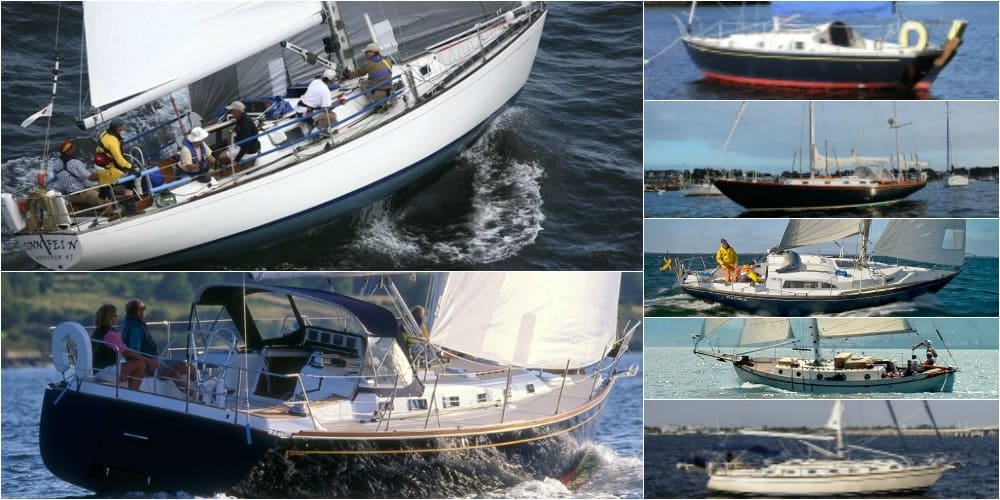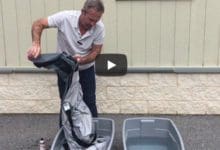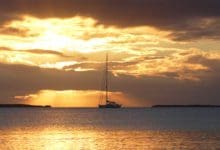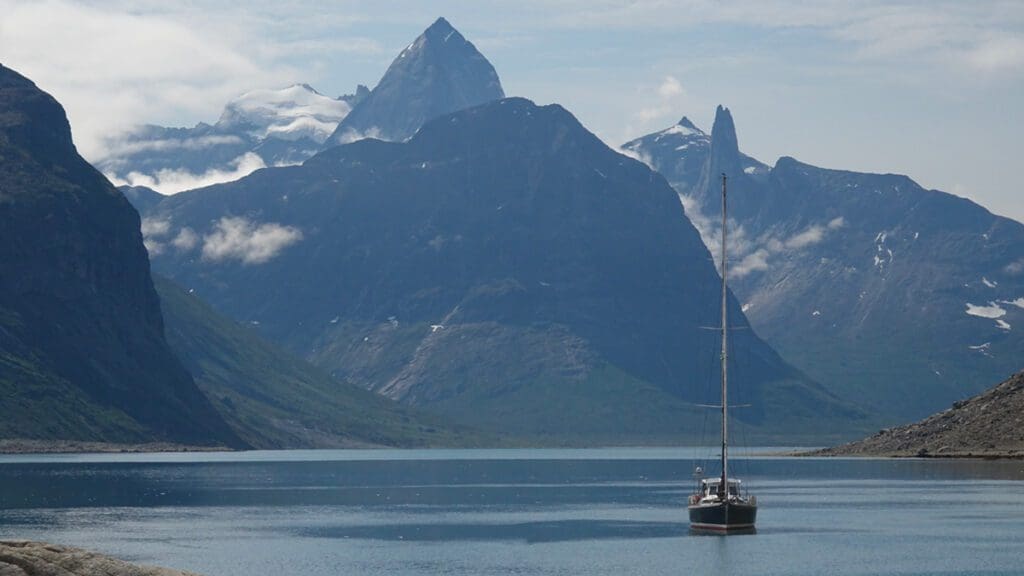
A determined Hylas 63 owner has demonstrated just how straightforward it is to island-hop across the far north of the Atlantic Ocean. With just a few cold-water improvements made to his yacht Shaima, Alberto Duhau and an ever-changing crew took 132 days to cruise from Florida to Valencia, by way of Newfoundland, Greenland, Iceland and the Faroes.
Duhau conceived of the expedition as a homage to the Viking navigators, and he was determined to do it in a comfortable non-expedition boat. “In studying the Viking explorations, I found that it was all about sailing in fast ships and in short hops, during favourable weather windows in the height of summer,” said Duhau. “If the Vikings did it ten centuries ago, why couldn’t we do it in greater safety and comfort today?”
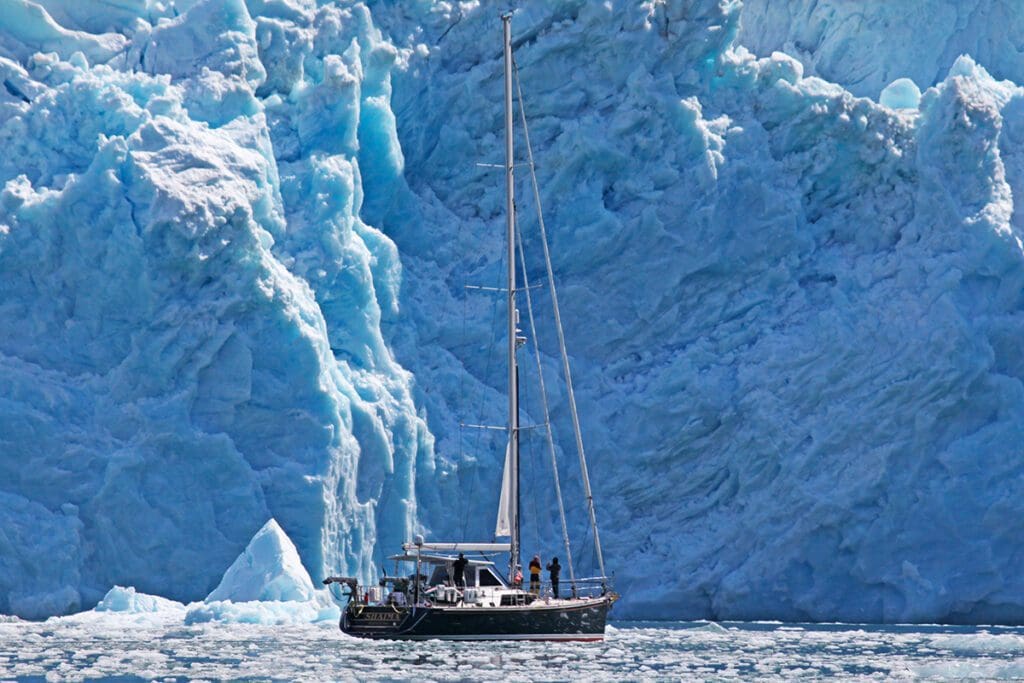
Built by Hylas yard Queen Long Marine in Taiwan, Hylas 63 Shaima was already a supremely comfortable 8-berth bluewater yacht, with sleek lines from the incomparable Germán Frers. Her hull was a hi-tech sandwich construction using alternating layers of Twaron and glass fibre for stiffness and strength in collision, and she had been customized for offshore work. But key cold-water improvements included building a rigid cockpit enclosure with heating, installing a heat exchanger in the watermaker intake, reinforcing the davit bases for a 15ft tender, and beefing up the rudder bearings. She was also equipped with 120m of anchor chain and long shorelines.
Once the boat was expedition-ready, Duhau drew up a detailed passage plan whose key feature was cruising southwest Greenland, particularly the 57-mile long Prince Christian Sound. This narrow fjord separates the mainland from numerous islands to the south, while glaciers calve into its deep waters from the north. In places, it is no more than 500m wide.
With impressive tankage for 2,450lt of fuel and 1,450lt of water, and several fridges well stocked with fresh food, Shaima took the US east coast in one long hop. Then she put in at several spots along the coasts of Nova Scotia and Newfoundland, reveling in the sight of humpback and pilot whales. “The small coastal villages of this part of Canada start to have the flavor of Scandinavian towns that dot the landscape for the rest of the trip,” noted Duhau.
“In studying the Viking explorations, I found that it was all about sailing in fast ships and in short hops, during favourable weather windows in the height of summer. If the Vikings did it ten centuries ago, why couldn’t we do it in greater safety and comfort today?”
Alberto Duhau
They waited three days on Newfoundland for a weather window before making the 700-mile jump to Greenland’s second ‘city’ Qaqortoq. With 15-20 knot winds from the south and west, it was a good broad reach most of the way, although there were plenty of bergie bits and ice sightings to keep the crew busy. “Sometimes we could scout for icebergs from the warmth of our cockpit enclosure, but often we had to stand watch unprotected from the side deck,” said Duhau. “Our one-piece survival suits and our Arctic boots were essential.” The warmth and comfort of the boat’s luxurious interior made a welcome respite from the cold and fog.
Some 90 per cent of Greenland lies under the ice cap, with only a strip of exposed land around the coast. In anchorage after anchorage, the crew explored to their hearts’ content, taking in iceberg climbing, sea kayaking and bountiful fishing for Arctic char. Care was needed through Prince Christian Sound, where high granite cliffs on either side are punctuated by 12 calving glaciers. Nonetheless, this was a highlight of the trip.
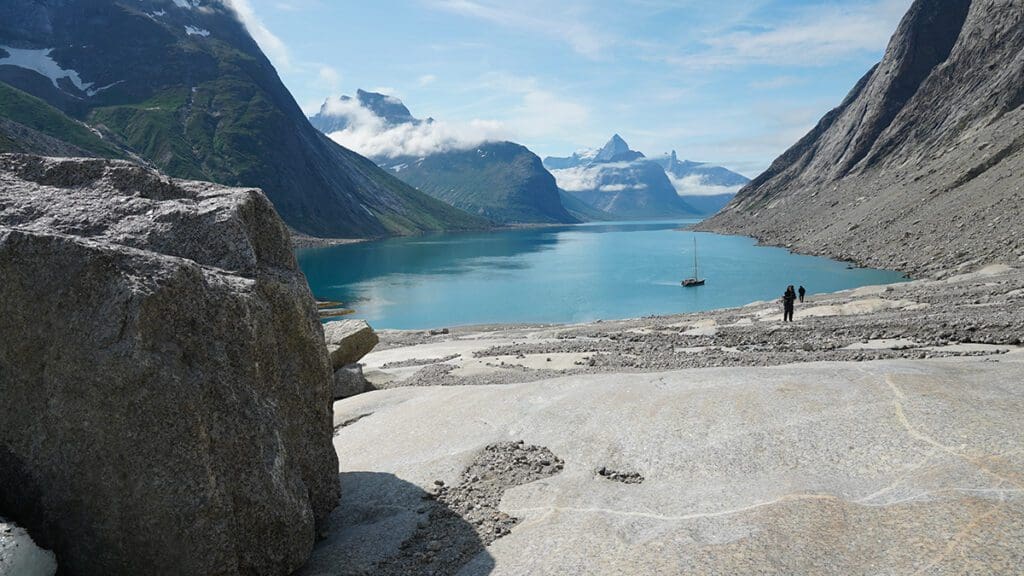
It was a much simpler crossing to Iceland across 660 miles of mostly ice-free sea. The passage took just four days, and the island is much better supplied with marinas and tourist facilities. Duhau had planned to cruise the wilder north-about route, but changed plans in order to make up lost time. “Reykjavik is welcoming, culturally vibrant and fun,” he said. “We spent 10 days there and never ran out of things to do.”
The cruise down to the Faroe Islands felt like downhill by comparison, although the islands themselves are beautiful, empty and wild. One can explore by sea readily enough, but it is quicker to do so by land, because the main islands are connected by tunnels.
Hylas 63 Shaima made a fast passage to Inverness, where she picked up the Caledonian Canal to traverse Scotland. Duhau enthused about “climbing up and down dozens of sea locks, sailing across the legendary loch Ness and reaching lovely Oban on the third day.” Tobermory and Islay came next, where the crew visited no fewer than six distilleries, reaping the inevitable reward the next morning. Highlights after that were Belfast, Dublin and then the Spanish rias, where the tempo began to rise as they hopped south and into the Mediterranean.
Looking back on his adventure, Duhau noted that they had not spent more than six days in a row at sea – a far cry from the two to three weeks required for the direct route. “The route up North is just so isolated, so pristine, it touches your heart. You do not need an expedition boat to do this, just a seaworthy ocean vessel and a competent crew,” he added. “Island hopping across the Atlantic is a very feasible project.”

